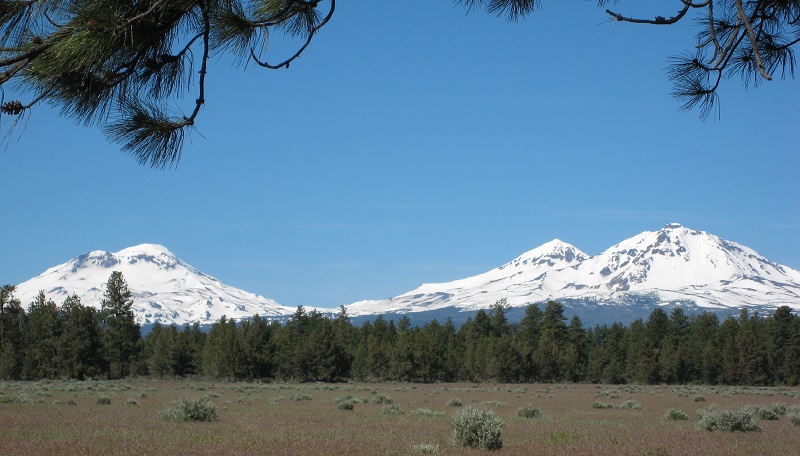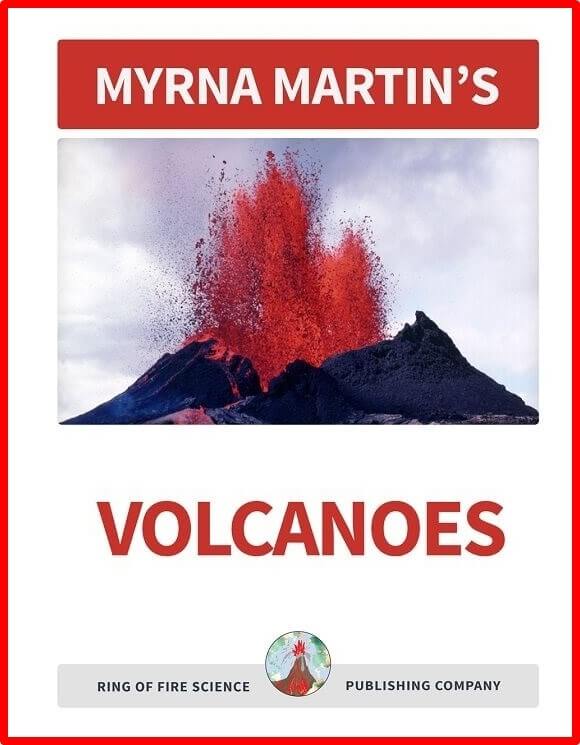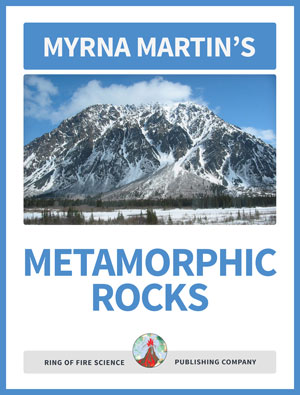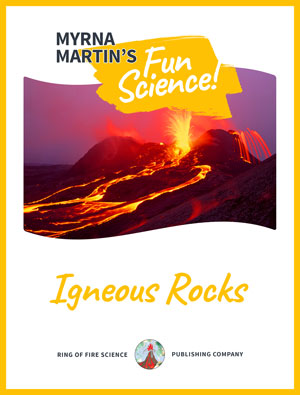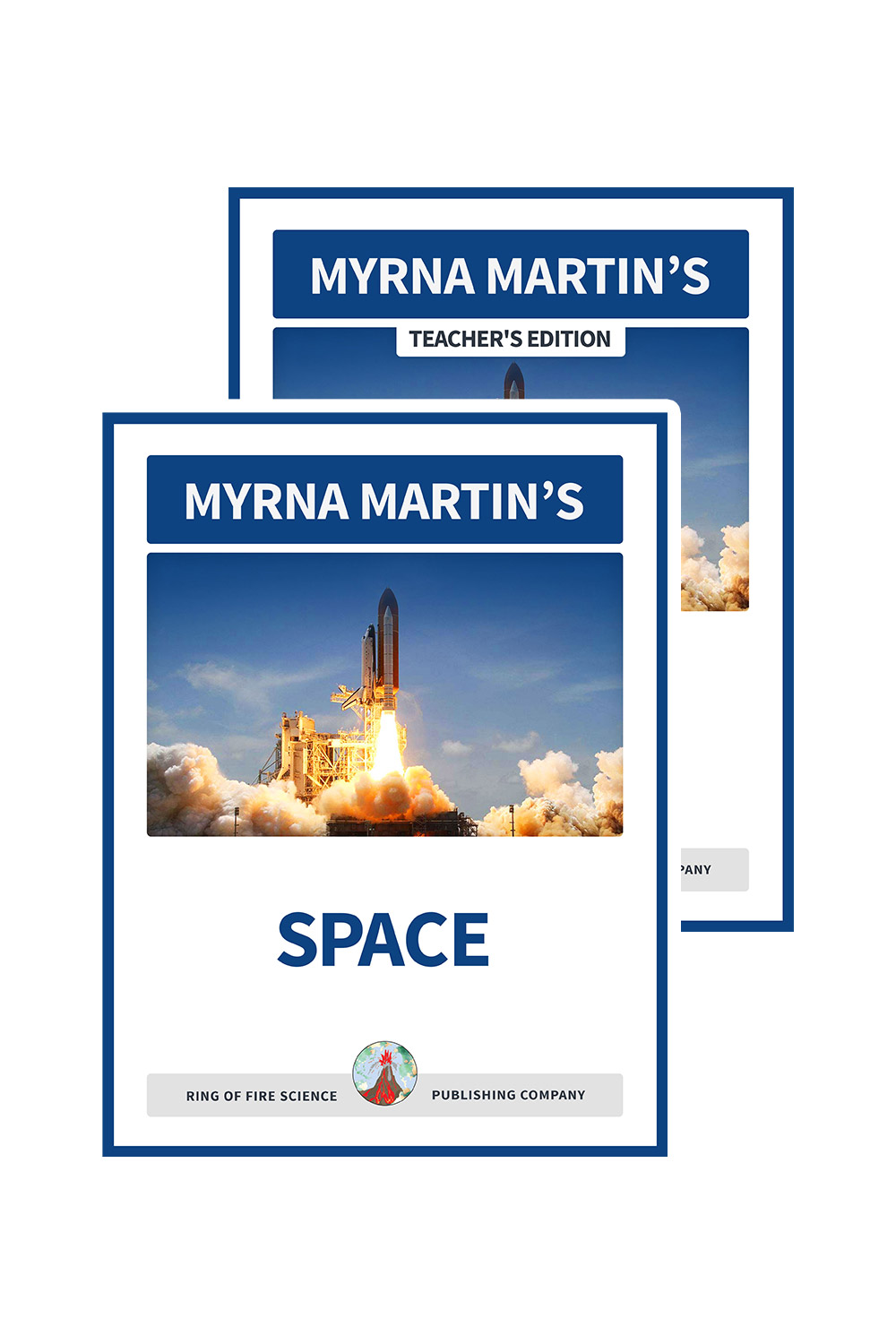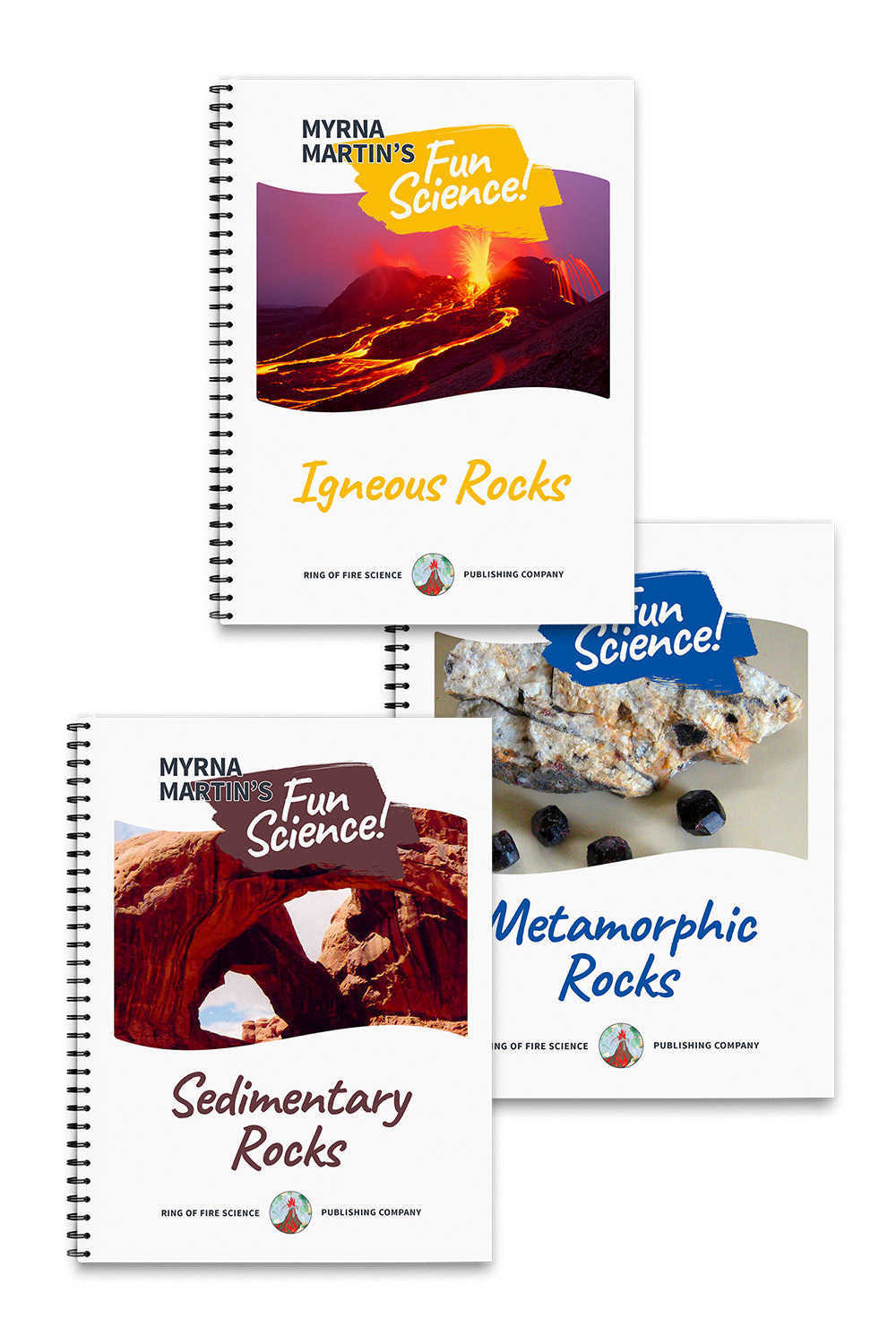Composite Volcano
What is a composite volcano?
Composite volcanoes are also known as stratovolcanoes. They contain a variety of lavas. Some composite volcanoes erupt basalt, andesite, dacite, and rhyolite lavas.
Other volcanoes primarily erupt andesite like the ones in the Andes Mountains in South America. The lava is so common in this area that andesite was named for the mountain range.
Three Sisters volcanoes in the Oregon Cascade Mountains by Myrna Martin
Andesite is common in most composite volcanoes
Scientists studying volcanoes named the lava found in the volcanoes andesite because they were so prevalent in the Andes Mountains in South America.
What type of eruptions are common on stratovolcanoes
Composite volcanoes grow extremely tall because they often alternate between explosive eruptions followed by lava flows.

|
Our Earth Science books are designed for students to work through the lesson on their own with little to no help from their teacher. The Answer Key is in the back of each book. The 16 Chapters in the book contains:
|
Expanding gases create explosive eruptions and lava flows
Gases in the magma increase in size as the molten rock nears the Earth’s surface leading to explosive eruptions of tephra followed by lava flows.
How long do composite volcanoes last?
The eruptions of tephra followed by lava flows creates a framework that allows the volcanoes to grow tall. These giant mountains last thousands of years.
How often do composite volcanoes erupt?
Composite volcanoes vary in the length of time between eruptions. Sometimes the eruptions are so far apart scientists thought they were dormant when another large eruption occurs.
Eruption of Mount Pinatubo in 1991
Mount Pinatubo is a volcano in the Philippines. It was dormant for so long that it was listed as extinct prior to its eruption in 1991. When it erupted it was the 2nd largest eruption of the 20th century. The central Luzon landscape in the Philippines around Mount Pinatubo was drastically changed after the eruption on June 15, 1991.
Mount Pinatubo lahars
Hot volcanic rock filled river valleys to depths of 200 m and killed vegetation on nearby slopes. Two hundred lahars swept down the mountain the first three months after the great eruption. The lahars destroyed roads, bridges, and valuable farmland.
During the monsoon season that year 3 to 5 lahars occurred each day.
More than 100,000 people lost their homes due to the eruption and lahars that followed.
The threat of lahars forced the evacuation of an additional 100,000 people living in the area.
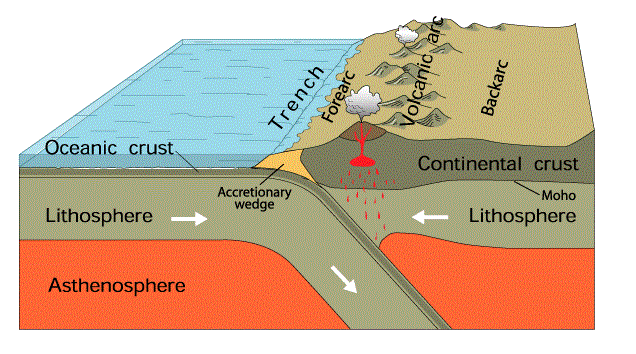
Volcanic arc forms on the continental size of a subduction zone. USGS
Composite volcanoes in subduction zones
A composite volcano forms in subduction zones when a crustal plate is forced into the mantle and begins to melt. Andesite, dacite and rhyolite lavas are the primary types of lava that form these volcanoes. Eruptions on the volcanoes often alternate between tephra and lava flows.
Subduction zone volcanoes
Geologists often use the term stratovolcanoes to describe the mountains that form in subduction zones instead of composite volcano. They use the term stratovolcanoes because of the layers of tephra alternating with lava flows.
The volcanoes form on the continental side of a subduction zone
The melting oceanic crust forms pools of molten rock in a magma chamber. The magma, molten rock, in the magma chamber is lighter than the volcano rocks that surround it. The magma works its way to the summit where it erupts as tephra or in thick lava flows.
Lava eruptions on stratovolcanoes
Andesite, dacite and rhyolite are the three major types of lava that creates these large volcanic mountains on the continents. These three types of lava have a high percentage of quartz and are associated with large violent eruptions.
Stratovolcanoes will often alternate between explosive eruptions and thick lava flows. This combination of eruptions produces the classic look of a composite volcano.
Growth of the volcano
The summit of a stratovolcano has steep sides. Andesite, dacite and rhyolite create slowing thick lava flows that usually cool on the upper slopes of a volcano.
The base of these volcanoes is wide and has gentle slopes due to erosion. As the volcano grows in size large amounts of the pyroclastic material erodes away. The eroded pyroclastic material is carried down the slopes by erosion where it is deposited at the base of the volcano.
More Volcano Links
Yellowstone Caldera The Yellowstone Caldera is the location of three supervolcano eruptions.
Iceland Volcanoes Find out more about Grimsvotn volcano, Hekla volcano and Katla volcano which are the most dangerous volcanoes on Iceland.
Composite Volcano Composite volcanoes are volcanic mountains that form on the continental side of subduction zones.
Super Volcanoes Super volcanoes are places where massive volcanic eruptions occur. These eruptions can alter the weather and cause mini ice ages.
Dome Volcano A lava dome is small and often forms inside the caldera of a stratovolcano.
Volcano Facts Find out lots of fascinating facts and trivia about volcanoes on this webpage.
Home Page The Science Site contains information on our planet, volcanoes, science projects, earthquakes and much more.
Kids Fun sCIENCE bOOKSTORE
Check out Myrna Martin's award winning textbooks, e-books, videos and rock sets. The Kids Fun Science Bookstore covers a wide range of earth science topics. Click here to browse.
Sign up to our monthly newsletter and receive our FREE eBook containing 3 fun activities that don’t appear in any of our other books!
The Kids Fun Science monthly newsletter will include the following: current events, weird and fantastic facts, a question of the month, science trivia and the latest new content from our website.
We respect your privacy and you can be assured that we will never share your email address or use it for any other purpose than to send you our newsletter.


